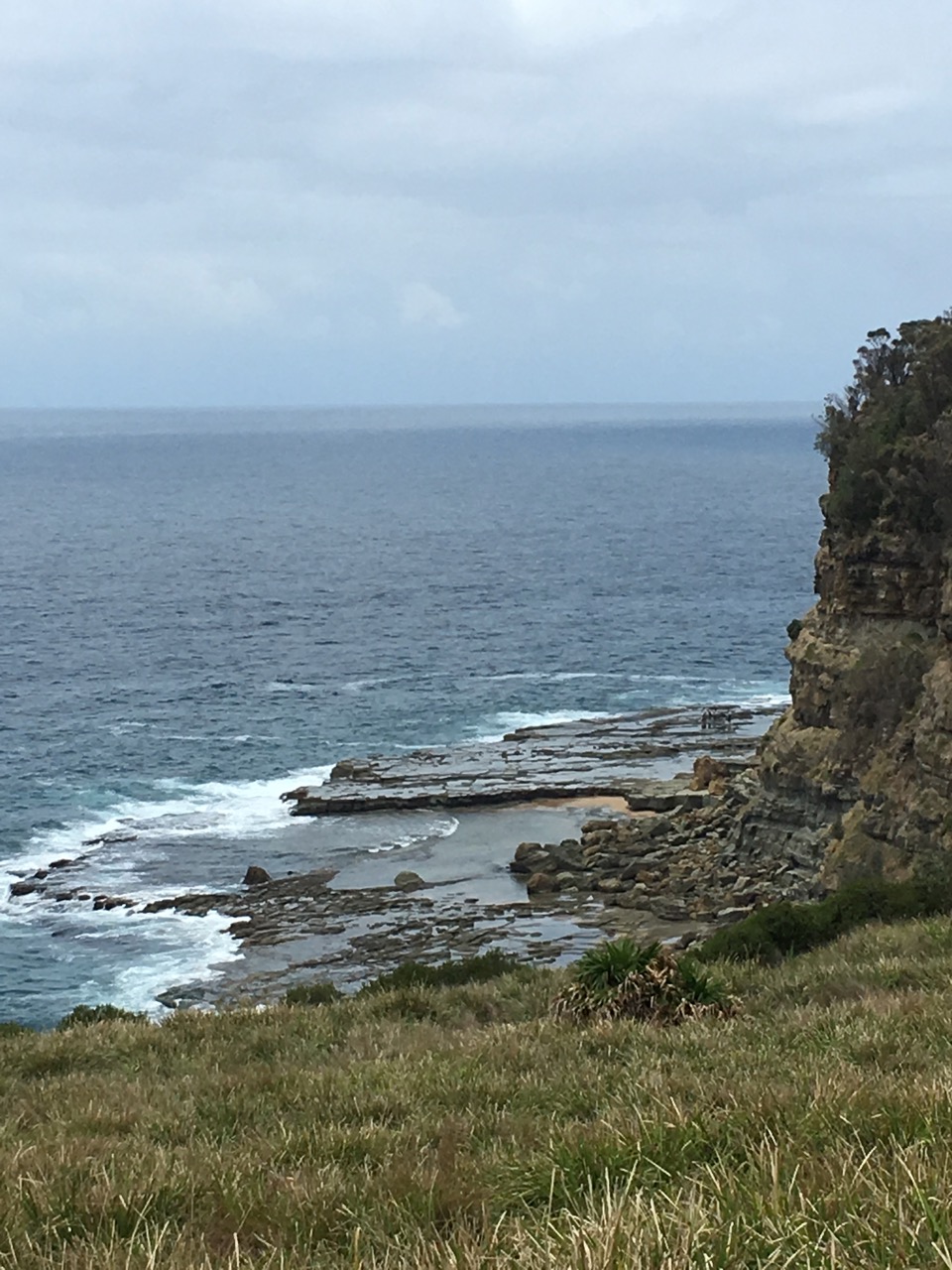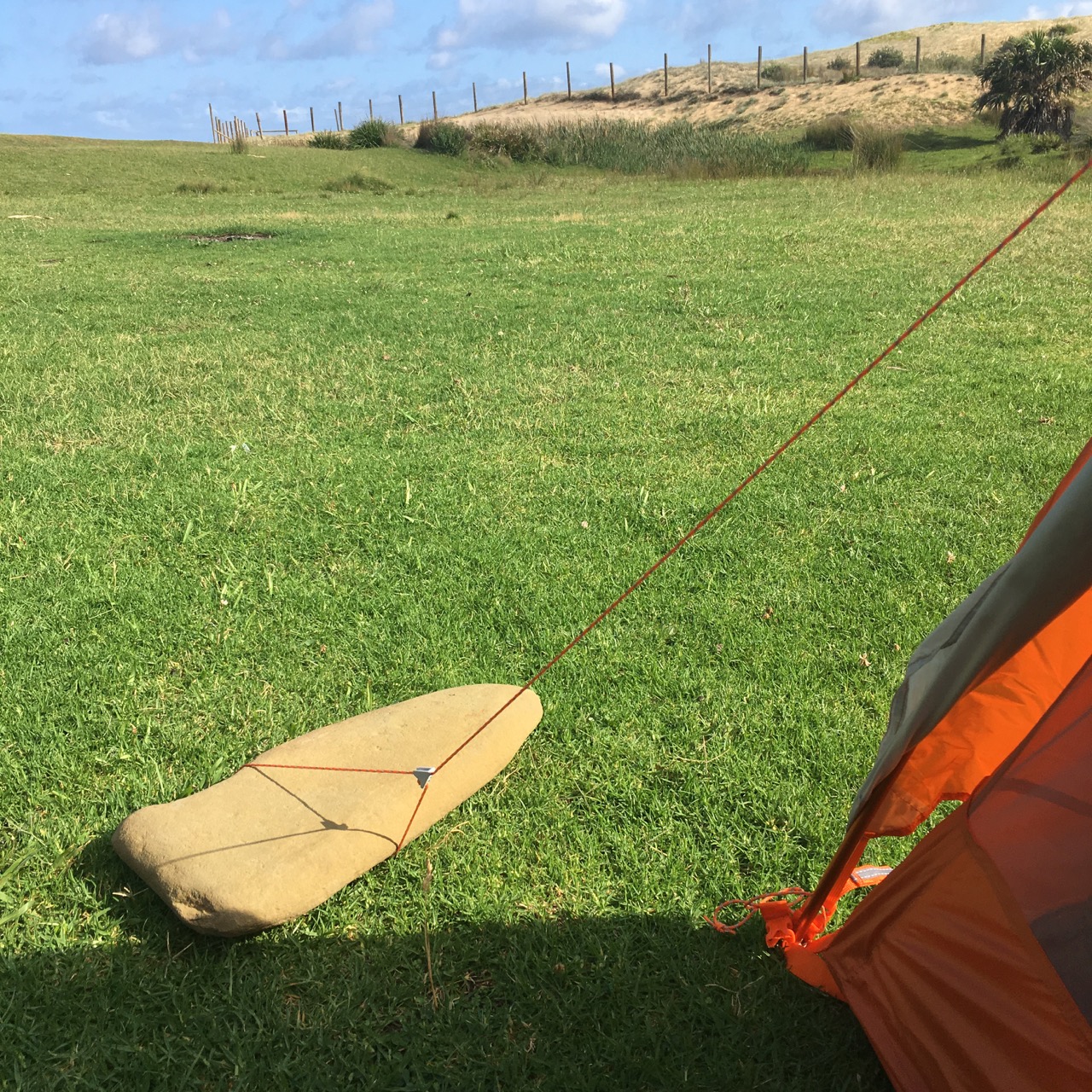
The Coast track, Royal National Park
Since my move to Sydney in early 2015, I have discovered that the city offers fantastic opportunities for hiking. I have done several day walks and car campings and gradually I developed a desire to try an overnight hiking. The Royal Costal Track seemed a good choice as it is a 2-day course and easily accessible by public transport.
I prepared for it in the last few months doing my research as well as buying appropriate gears so that my first solo would be enjoyable without a drama!
Overall, I really enjoyed solitude and the scenery. I had no major issue or an injury other than sunburn. I will definitely do more multi-day hikes.
Here’s what I’ve done and what now I think I could have done better.
The track
The Coast track is a well loved walk and there are plenty of resources and information you can find online. Here are a few highlights:
- NPSW website’s The Coast track info page: link
- WildWalks has very detailed track notes: link
- A very through hiking report from a lady who did her first overnight hiking. I basically followed her route (except having fish & chips in Bundeena which I regret): link
- I bought topological maps of the track from this website and carried them on the walk. The website has other useful information of the route: link
Itinerary
Day 1
- 9-ish Redfern station to catch a train to Helensburgh
- 10:23 Helensburgh station, change to the next train
- 10:32 Otford station
- Noon Passing Palm Jungle
- 12:30 Burning Palm beach
- 14:00 Arrived at North Era camping ground
- Plenty of time to enjoy the view and dinner
- 7:30 Sunset, reading, sleeping
Food
- Breakfast at home
- A cliff bar during on the trail as a snack/lunch
- Half a waffle for a snack in arvo
- Backcountry dehydrated meal (Roast Chicken) for dinner
Day 2
- 5:18 Wake up and went to the beach to see sunrise
- 6:10 Breakfast
- 7:40 Packed and I’m ready to set off
- 8:30 Garie beach where some civilisation is
- 10:50 Wattamolla where I had my lunch (and toilet)
- 12:00 Marley beach
- 13:20 The Coast track entrance (there’s a toilet)
- 13:50 Catch a ferry to Cronulla at Bundeena wharf
- 15:40 Back home
Food
- A cuppa in the morning
- Backcountry Beef Teriyaki for breakfast
- A cliff bar during walk in the morning
- A tuna can for lunch at Wattamolla
Gears
I tried to pack light but also wanted to learn by trial and error. For example, I could leave my gas stove/canister and bring only dry food as it was only a 2-day walk in summer. But I wanted to see how I would like cooking and also wanted to feel what it’s like to carry a heavy pack.
In the end, my total pack weight was just under 15kg with all food and water. I think it wasn’t too bad.
Pack
I didn’t have a backpack for multi-day hiking. I bought an Osprey Atmos 65L (size S) at Paddy Pallin on (early) Christmas sale.
I also considered Osprey Aether 70 which has a rain cover plus a few more cool features. However, I ended up getting Atmos for its lightness (1.92kg vs. 2.307kg), adequate size (forces lighter packing), and price (RRP $359.95 vs. $419.95. Aether wasn’t on sale either).
The pack easily accommodated everything I needed for the walk and provided comfort throughout the walk. I am very happy with the purchase.
Shelter
- Big Agnes Copper Spur HV UL3, 1.76kg
It’s a very light weight 3-person tent. I bought a 3-person tent because I had a plan to do Cape-to-Cape walk in WA with my sister. We ended up not doing it but that’s why I bought a large tent.
Despite it’s a 3-person, it is still lighter than most of smaller products. It’s easy to pitch and has plenty of room for one :-) I bought it from CampSaver when they had a good deal + free international shipping offer.
Sleeping system
- Kathmandu Nomadic insuLITE Sleeping Bag Regular 1.1kg
- Kathmandu Ascent Self Inflating Regular Mat Hike 38mm 0.95Kg
Both did the good job.
Cooking system
- Snow Peak GigaPower Stove auto 106g
- Snow Peak Trek 900 mug 175g
- Kathmandu Titanium Cutlery Set 55g
Water
- 2.5L water bladder in my backpack
- Klean Kanteen Reflect water bottle 18oz (532ml)
- A 600ml frozen plastic water bottle
- Total 3.6L
Water consumption is highly personal and I wasn’t sure how much water I would consume for keep my body hydrated and cooking.
I took a 2.5L hydration pack from my Osprey Manta 20. Atmos 65 doesn’t come with a bladder, but it has an inner compartment for a water reservoir.
I ended up running out of water about an hour before the finish and it was painful. Additional 500ml of water would have been perfect.
Food
- 2x Backcountry meals (roast chicken and teriyaki beef) from Mountain Designs at a 50% discounted price
- 2x Cliff bars
- 2x gummies
- 1x waffle from Coles
- 1x SiS Go Isotonic Energy 60ml gel
- 2x SiS Go Hydro tablets
- Hotel tea bags and coffee sachets I took from business trips :-)
Clothing
- Brooks Casadia 12 trail running shoes
- Injinji Mid-weight Trail socks
- Injinji Light-weight liner + Kathmandu ankle socks
- A shorts
- Kathmandu long hiking pants
I bought my trail runners just before the walk so didn’t have time to break in. But I had no issues with my feet in the socks and liners.
Misc
- Sea to Summit micro fibre towel
- Kathmandu Blackbird 120 Running Orienteering Head Torch
- Printed topo maps purchased from Sydney Coastal Walks
Retrospect
Items unused
- Fuji X-M1 camera
- An instant ramen bowl
- Silva compass
- Equip Rec 2 First-aid kit
I am not ashamed of the rest of items unused obviously ;-)
Things I could do better
I thought I would take high quality photos with my X-M1, but it was kept in the top compartment during the whole trip. I am not sure whether I would bring it to my hiking again. I feel The phone camera is enough.
I was going to eat ramen for lunch on the day 2, but there were a couple reasons why I didn’t. It was too hot when I arrived at Wattamolla where I planned to have my lunch and I didn’t want to bother boiling water. And the ramen bowl would require at least 300-400ml of water which apparently was scarce resource. I had a bottle of water that I filtered at the toilet at Garie beach with my Sawyer Mini water filter, but for some reason I didn’t want to use it unless I really had to.
The track has many beautiful beaches, but I enjoyed them with my eyes only. Partly because I was by myself most of the time so I didn’t want to get in trouble in water. Another reason being that I worried too much about time. It turned out I could have had at least a couple hours of room each day that I could have spent splashing water.
I got my lower arms and helixes sunburned as a result of a couple mistakes that could have been prevented. Firstly, I wore a running cap that only has a front visor. Thus it couldn’t protect my ears from the brutal sunlight on the second day. Secondly, I only applied sunscreen when I left the campground in the morning and didn’t reapply regularly.
For some reason, I didn’t have stakes (or pegs) for my tent. I am not sure if I lost them or I didn’t get them at the first place. As you can see in the photo on the top, I had to use rocks to secure guy lines to prevent my tent from blown by wind.
Last but not least, I could plan my meals/snacks better. I was happy with Backcountry dehydrated meals. However, some selections weren’t ideal. A tuna can was too heavy and bland in taste. Next time I would bring tuna packs with a flavour. I also learned that instant noodle bowls are not a very good hiking food when water source is limited.





















